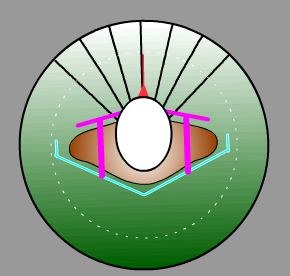URMC / Labs / Newlands Lab / Projects / Animal models of head stabilization: effects of inertia on reflexive movements
Animal models of head stabilization: effects of inertia on reflexive movements

Vestibulocollic reflexes (VCR) can be observed
during whole body rotation as a head rotation in
the opposite direction of the body movement.
Nearly 17% of elderly Americans fall at least twice annually, and 63% of falls occur while walking. Injuries related to these falls are a major contributor to United States healthcare costs. The key to understanding why people fall may be achieved through studies directed at understanding how the CNS uses vestibular and proprioceptive sensory signals to maintain the body's stability throughout locomotion.
When a person experiences vestibular loss, gait instability results, in part, as a consequence of lateral motion and altered percept of body tilt. The proposed studies are specifically targeted at determining how sensory signals are used in controlling segmental reflexes that stabilize lateral motion of the head and upper body.
Postural instability occurs when our reflexes produce muscle activity that is insufficient to compensate for movement caused by the body’s inertia. A property of all postural reflexes is that they must be able to scale the muscle activity they produce in order to minimize the possibility of postural instability. More importantly, the CNS must be able to dynamically adjust this scaling, otherwise many contexts (e.g., wearing a backpack or a helmet) would render our reflexes ineffective during activities like gait, potentially increasing the risk of falling. Despite the significance of this problem, remarkably little is known about how this is achieved by the CNS.
A major barrier to understanding more about these reflexes has been the difficulty in recording the activity of neurons along the vestibular pathways in animals that are moving and actively producing voluntary and reflexive movements. Our studies using non-human primates parallel ongoing human studies in the lab and provide an opportunity to gain insight into the neural network processing these complex stimuli.
« back to all projects